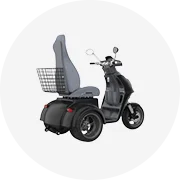50cc Motorcycle Maintenance
Proper maintenance is crucial for optimal performance, longevity, and safety of your 50cc motorcycle. Following a regular maintenance schedule will help prevent breakdowns and reduce repair costs.
Pro Tip: Keep a maintenance log to track all service dates, parts replaced, and upcoming maintenance requirements. This documentation will also help maintain resale value.
Essential Maintenance Schedule
| Maintenance Task | Frequency | Importance |
|---|---|---|
| Oil Changes | Every 500 miles or 3 months | Critical |
| Air Filter Cleaning | Monthly/Replace every 6000 miles | High |
| Spark Plug Inspection | Every 3000 miles or 3 months | Medium |
| Tire Inspection | Weekly | High |
| Brake Check | Every 2000 miles or 2 months | Critical |
| Chain and Sprockets | Every 1000 miles or 1 month | Medium |
| General Inspection | Every 5000 miles or 5 months | High |
Key Maintenance Areas
Oil Changes
Check and change the oil regularly, at least every 500 miles or three months. Oil is the lifeblood of the engine. It keeps the moving parts lubricated and reduces friction and wear. Use the recommended oil type and grade for the specific 50cc motorbike.
Air Filter
Check and clean the air filter every month or according to use. A clean air filter ensures that the engine gets enough clean air for optimal combustion and performance. Replace it every 6000 miles or if damaged.
Spark Plug
Inspect the spark plug every 3000 miles or three months. A good spark plug ignites the air-fuel mixture in the engine and ensures smooth operation. Clean or replace the spark plug if necessary.
Tires
Check the tire condition and pressure every week. Properly inflated tires improve fuel efficiency, handling, and safety. Inspect the tires for wear and replace them when worn out.
Brakes
Check the brake pads, discs, and brake fluid levels every 2000 miles or two months. Ensure that the braking system is in good condition and functions properly. Replace worn brake pads and clean the brake discs.
Chain and Sprockets
Inspect the chain and sprockets every 1000 miles or one month. Ensure they are clean, lubricated, and adjusted to the right tension. Replace them if they show signs of wear or damage.
General Inspection
Perform a general inspection of the motorcycle 50cc every 5000 miles or five months. Check the electrical system, lights, indicators, and other essential components. Address any issues immediately.
Warning: Never neglect regular maintenance, especially safety-critical systems like brakes and tires. A poorly maintained 50cc motorcycle can lead to dangerous riding conditions and costly repairs.






























































